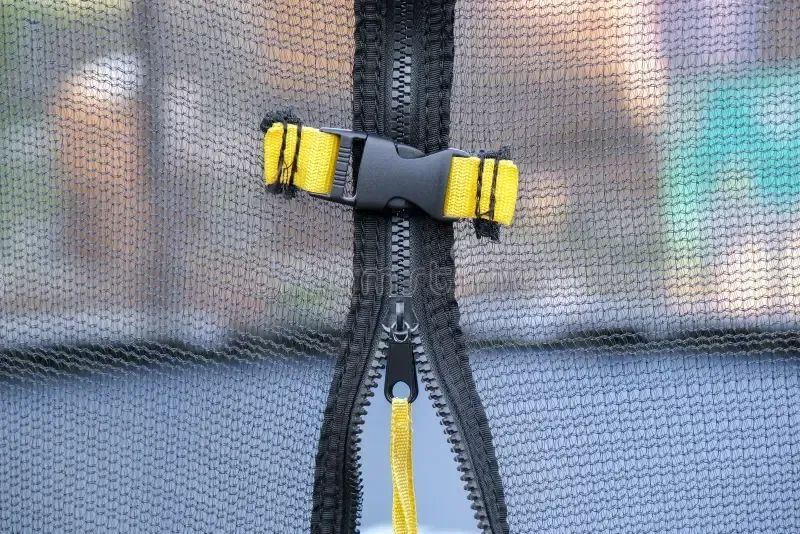
How to Choose the Right Trampoline Enclosure Netting for Safety & Durability
Choosing the Right Trampoline Enclosure Netting for Safety & Durability
Intro
A trampoline’s enclosure net is the first line of defence against falls — yet it’s often the part brands understand the least. Net failures usually come from poor-quality filament, weak UV protection, loose mesh density, or cheap stitching.
If you’re sourcing nets from China, choosing the correct materials and ensuring proper factory testing can dramatically improve safety and customer satisfaction.
This guide breaks down exactly what to look for.
1. PE vs PP — Which Material Should You Choose?
PE (Polyethylene)
Cheaper
Stiffer feel
Lower UV resistance
Shorter lifespan
PP (Polypropylene)
Stronger
Softer, more premium feel
Higher heat and UV resistance
Better for long-term outdoor use
Recommendation:
PP netting is the best option for premium brands and harsh climates like Australia and the U.S.
2. Mesh Density — The Hidden Safety Factor
Mesh density determines:
Impact resistance
Tear resistance
Feel & softness
Long-term durability
Cheap factories use:
Thin filament
Loose weave
Inconsistent threading
This can lead to holes forming early, especially from small impacts or UV exposure.
Look forconsistent, high-density mesh with thicker filament.
3. UV Protection — The #1 Cause of Net Failure
Sunlight destroys low-quality nets faster than any other factor.
Check for:
UV inhibitor coating
UV-stabilised filament material
Coating thickness testing
UV exposure simulation results
If a net isn’t UV-protected properly, it will fade, weaken, and tear in months — not years.
4. Zipper & Entry Point Quality
Most net failures happen at the zipper entry, not the mesh.
Inspect:
Reinforced stitching around zipper track
High-quality zipper teeth
Double stitching around stress points
Smooth track movement under pressure
Weak zipper areas = early ripping.
5. Stitching & Reinforcement Strength
A strong net requires:
Heavy-duty thread
Tight, even stitches
Reinforced seam tape
No loose threads
Minimal stitch gaps
We often see factories hide poor stitching under decorative tape — during QC we remove layers to inspect the real quality.
6. Factory Testing You Should Require
A reliable supplier should perform:
• Tensile Pull Tests
Ensures mesh and stitching can withstand force.
• Impact Stress Tests
Simulates someone falling or leaning on the net.
• UV Exposure Simulation
Predicts how fast the net will degrade outdoors.
• Seam Strength Tests
Checks reinforcement stitching and zipper areas.
If the factory can’t provide test data, they’re not the right partner.
Conclusion
The enclosure net is one of the most essential safety components on a trampoline. Choosing the right material, ensuring strong UV protection, and verifying proper factory testing can significantly reduce failures, improve customer trust, and extend product lifespan.
With the right sourcing partner, you can ensure every net meets premium standards.
CTA
Need high-quality netting for your trampoline models?
We design, source, and QC-test custom nets built for harsh outdoor conditions.
